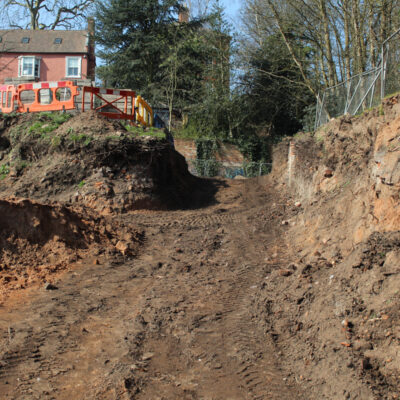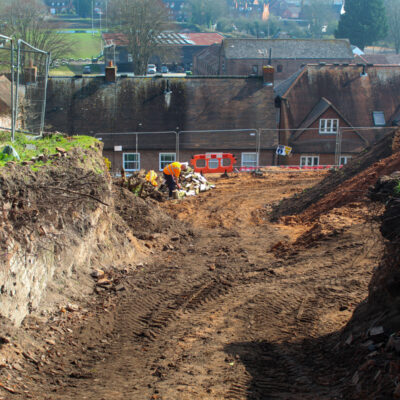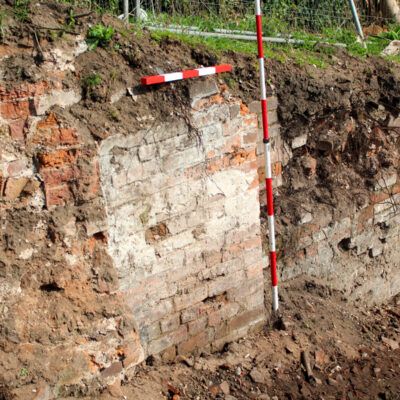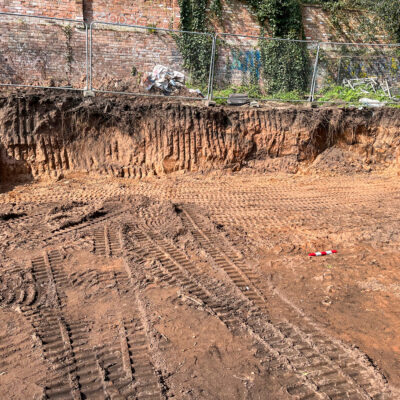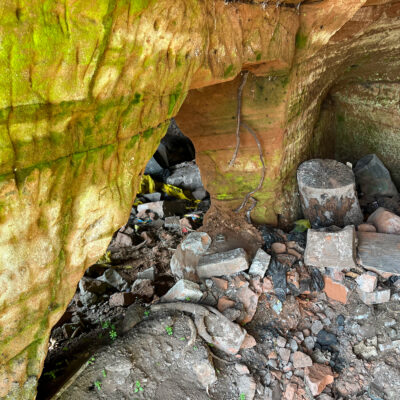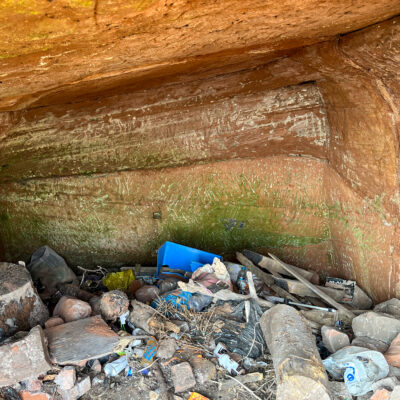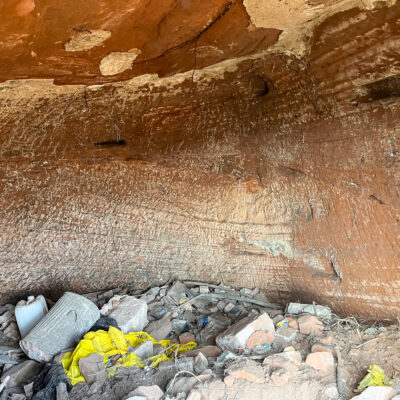Archaeological Observation, Bridgnorth
The site was located above Friars Street, with access off Granary Steps, a steep pedestrian footway named after a granary at its summit, which was serviced by mules hauling grain up from the medieval and postmedieval riverside wharves. These wharves included ‘Friars Load’, a name derived from the nearby Franciscan Friary.
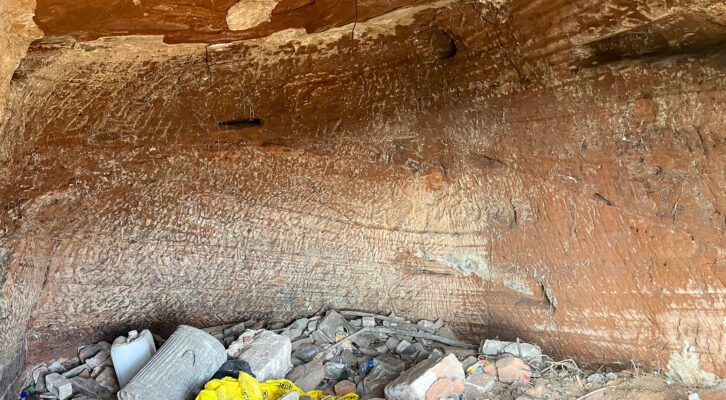
In Brief
Key Points
- Located in ‘High Town’ on a sandstone cliff above the River Severn containing rock-cut dwellings with evidence of medieval and postmedieval habitation
- In an area of small burgage plots that may have developed in response to riverine trade predating the medieval borough
Summary
Documentary records appear to show that by the mid-late 17th century, the site was occupied by a house and outbuildings belonging to a wealthy surgeon named William Clarke, who also held several other properties in Bridgnorth.
The 17th century dwelling was later replaced by ‘Rock House’, a substantial 13-room property, with a separate wash-house and summerhouse, as well as yards and formal gardens, which had been demolished in the late 1940s on sanitary grounds
Observation was carried out on the site in connection with the construction of a detached two-storey dwelling with detached garage and garden store.
Results
The site works exposed a pair of adjacent caves backing into the terraced hillside which were not listed among the inhabited caves documented in a survey of 1990.
One of the caves had a brick frontage and there was internal evidence in the form of gouge marks to suggest that both had been carved out of the hillside, probably for use as storage, as no indication of habitation was observed.
This would be consistent with evidence to suggest that in the post-medieval period many buildings on the riverside incorporated artificial caves used as cellars and storehouses.

